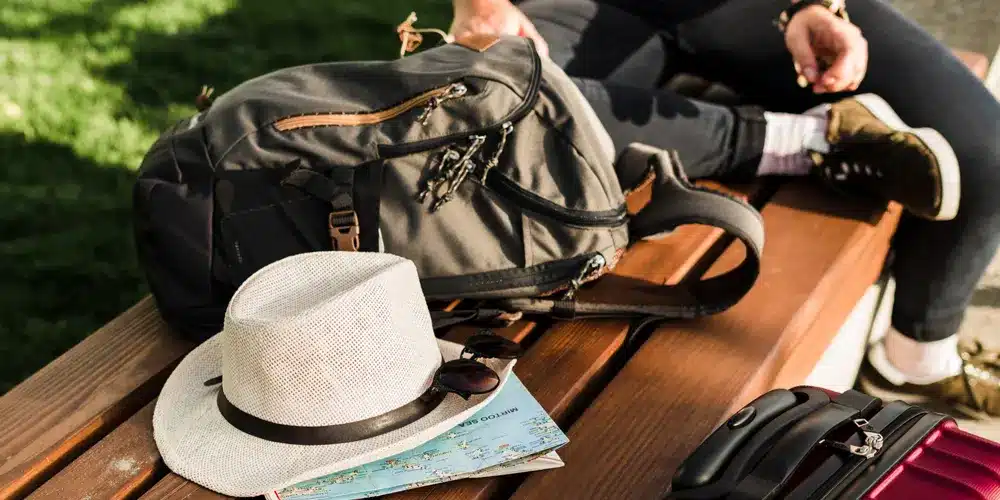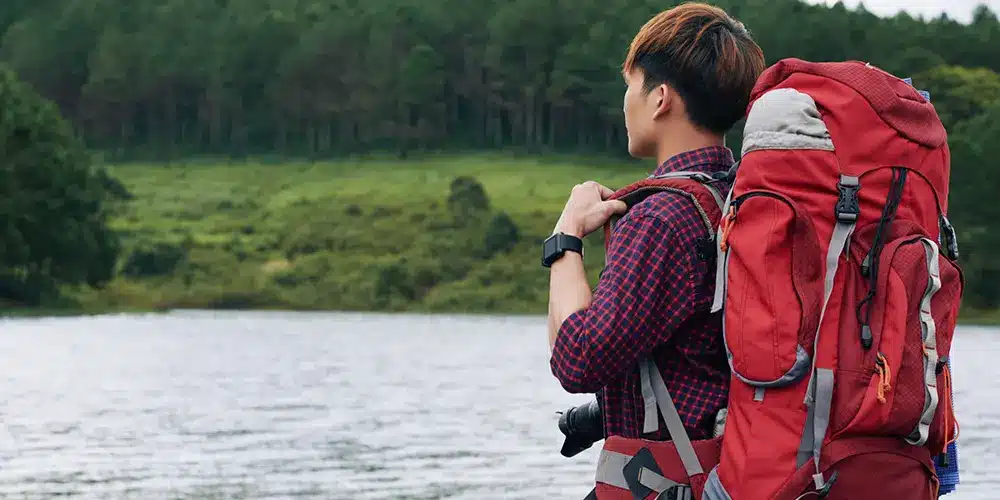

Trekking a popular outdoor activity, blends excitement with physical difficulty in the midst of the beauty of nature. Exploring different landscapes such as mountains, forests, and trails is enjoyed by people worldwide for the chance to explore and improve their overall health. Nevertheless, having the appropriate equipment is essential for a safe and enjoyable hiking adventure. Utilizing the right gear like strong hiking boots, appropriate clothing, navigation tools, and first aid kits can enhance comfort and reduce dangers like harm or exposure. Hence, preparing adequately is crucial to ensure you fully enjoy the adventure and remain secure when discovering the wonders of nature during a trek.
Essential Clothing Requirments
While packing the essentials for the trekking equipment, clothing is the most crucial aspect of it. It is important to have weather-appropriate clothing with you, Thus when packing clothes it is important to have several considerations:
Base Layers
Base layers play a crucial role in guaranteeing comfort and peak performance while engaging in outdoor activities. Wearing materials like waterproof, polyester, or merino wool is crucial to draw moisture away from the body, preventing chafing and discomfort while keeping you dry. Wool-made trekking pants are excellent at regulating temperature and warding off odors, making them ideal for various climates.
Artificial materials are waterproof and breathable, making trekking equipment perfect for high-intensity activities. These foundational layers form a breathable shield that provides insulation even when damp, essential for controlling body temperature during activity or when exposed to varying weather conditions. Selecting the correct material guarantees a pleasant feel and improves overall outdoor enjoyment.
Insulating Layers
Clothes such as wool jackets and sweaters are essential for keeping cozy during colder temperatures. Fleece, made from synthetic materials, traps air close to the body to retain heat while remaining breathable and quick-drying. It provides great insulation even when wet, making it ideal for activities that require careful moisture management.
Thermal jackets excel in providing unbeatable warmth for extremely cold treks by using natural down feathers to create insulation and efficiently retain heat. These versatile insulating layers provide comfort for a variety of outdoor activities such as hiking and skiing, keeping you warm while allowing freedom of movement and comfort.
The last Outer Layer
These outer layers offer essential equipment for trekking protection from weather conditions like rain, snow, and strong winds, keeping wearers safe and dry. Despite just being resistant to weather, breathability is also crucial for their functionality. Breathable materials help sweat to evaporate, avoiding the accumulation of condensation within the clothes.
This trekking equipment list is crucial for ensuring the individual stays dry and at ease while being active, ensuring the regulation of the body’s temperature is at its best. Thus, outer shell clothing mainly protects from the weather, but their ability to allow air to flow through makes them suitable for both protecting and allowing movement during outdoor activities.
Footwear for Trekking

Your footwear is a crucial part of the essential items of your trekking gear equipment list. Let’s explore the type of footwear that helps in trekking:
Trekking Boots
Having the correct footwear can greatly impact your outdoor experiences. Hiking boots, created for rough landscapes, provide important elements that improve both comfort and safety. Having support for your ankles is important as it helps with stability on uneven surfaces and decreases the likelihood of injuries like twists and sprains.
A strong grip on slippery surfaces gives confidence on every step. Waterproofing, an essential characteristic, keeps feet dry and comfortable when encountering wet conditions or crossing streams. Combined, these qualities make hiking boots essential partners for hikers, guaranteeing they can handle any path with durability and dependability.
Socks
Picking out the correct socks is just as important as choosing the ideal boots. Absorbent fabrics are crucial, pulling moisture away from the body to maintain dryness and prevent blisters on the feet. This function is crucial during extended hikes, avoiding discomfort and potential skin problems.
Wearing a good pair of socks offers extra protection: thin liners minimize rubbing and improve moisture control, while thicker socks offer padding and warmth in colder weather. Through the integration of these components, hikers enhance foot well-being and convenience, enabling them to concentrate on the upcoming adventure without being bothered by foot-related pain.
Understanding the Difference Between Backpack and Daypack

Backpack
Selecting the appropriate primary backpack mainly relies on the length of the hike and individual requirements. Choose a size that can easily fit all trekking equipments without weighing you down during extended hikes. Search for attributes such as cushioned shoulder straps and hip belts to evenly distribute weight and lessen pressure.
These bags frequently come with sections for sorting equipment for trekking and might have the ability to hold a water reservoir for easy access to hydration while traveling. Make durability and comfort your top priorities to guarantee an enjoyable and easy trekking journey, even during lengthy expeditions.
Daypack
A daypack is necessary for brief outings like day hikes, providing a smaller, more condensed style compared to larger backpacks. It should include essential items such as water bottles, snacks, a simple first aid kit, and maybe a light jacket. Select a daypack featuring comfy shoulder straps and back padding for easy wearing while engaging in outdoor adventures. Certain daypacks come with exterior pouches for easy retrieval of commonly used items, increasing convenience while hiking.
Additional Trekking Equipments

Sleeping Gear
Choosing the right sleeping bag involves considering temperature ratings and fill types such as down for superior warmth-to-weight ratio versus synthetic materials for moisture resistance. Compactness and weight are crucial for portability. Insulation from the ground, provided by self-inflating mats or closed-cell foam, enhances warmth and comfort during sleep.
Navigation Tools
Basic navigation tools like maps and compasses are essential for trekking. GPS devices serve as reliable supplements, offering precise location tracking and route planning capabilities, especially in unfamiliar terrain or adverse weather conditions.
First Aid Kit
A properly equipped first aid kit will contain disinfectants, bandages, and medicines suitable for the length of the journey and surroundings. Tailoring prepares for typical injuries and illnesses in outdoor settings, enhancing overall safety.
Camping Gear
Tents offer protection for sleeping outdoors overnight. Ensuring that your living space is weatherproofed and well-ventilated is essential for staying comfortable and safe from the weather. Selecting a tent that combines lightness and strength is important for enduring outdoor elements and offering a comfortable shelter post-hike.
Summing Up!
In conclusion, trekking requires essential equipment tailored to varying conditions for a safe and enjoyable experience. It’s crucial to select equipment suited to the terrain and climate, ensuring comfort and safety. Prioritizing durability and functionality can enhance performance while minimizing risks. By investing in suitable gear from trusted brands, trekkers can better enjoy nature while staying prepared for any adventure.
